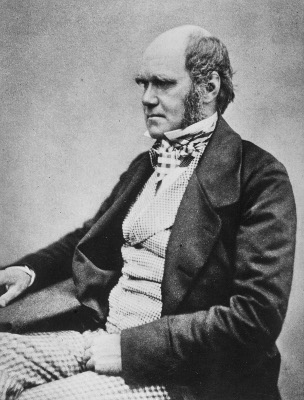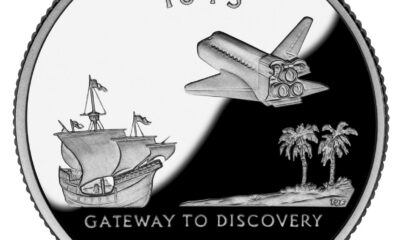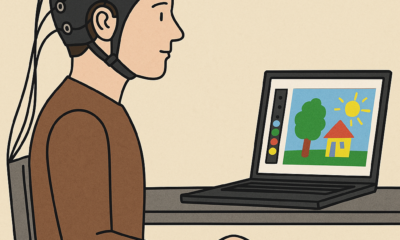Creation Corner
Counterpoint to evolution, part 4

Before beginning the next part of this Counterpoint series, I would like to ask two critical questions:
How did a country founded on Christian principles become so apostate?
The comprehensive answer to this question has many contributing factors. However, there is one in particular that should enrage anyone who has affection for either this country or the souls of its progeny. That is the systematic teaching of evolution in a manner that tears down the faith of young minds through the use of clever arguments based on lies and distorted interpretations of the facts. To be clear, an honest and sincere examination of all theories of origins is scientifically acceptable. In so doing, truth will fall where it should fall. However, the facts presented in current teachings are tortured to fit a theory that is irrational and in many cases, conflicts with known facts and laws of genetics, as well as direct observation. And as far as the separation of church and state goes: if it is acceptable to teach a theory implying that a religiously held belief is perhaps incorrect, then teaching another theory that supports a religiously held belief may be correct should also be acceptable. After all, schools in America should not exist to promote one ideology over another. They should exist to promote academic education, which never thrives in the face of censorship.
This begs the next question:
Where is the outrage?
To those that claim to have found peace with the theory of evolution by coming to the conclusion that God could have brought everything into existence through evolution: that is NOT what His Word tell us. His Word tells us that He created everything in six days – and a scholarly translation of those six days means a literal 24-hour period and not six days composed of thousands of years. Our children very clearly understand that if evolution is true then God is either a liar or non-existent. Science through the use of evolution tries to answer that question. Therefore, since this is perhaps one of the most important questions a human being can ask themselves, an honest presentation of science is paramount. It affects the way a human being may live, which also affects the culture in which that human may live.
Part 4 of this commentary on Pearson/Prentice Hall’s Biology 2006 textbook by Miller and Levine will concentrate on embryology, imagined by several people in the distant past but first made popular by Ernest Haeckel.
Evaluation and counterpoint
Page 385 –
Similarities in Embryology The early stages, or embryos, of many animals with backbones are very similar…What do these similarities mean? (Emphasis as it appears in the textbook.)
Darwin also had something to say about the necessary similarities of embryos that his theory pre-supposed. He stated:
Generally the embryos of the most distinct species belonging to the same class are closely similar, but become, when fully developed, widely dissimilar.
Ernst Haeckel, a contemporary of Darwin, ran with this concept and drew diagrams of selected animals to demonstrate this commonality.
 Background: in order for embryology (the study of the growth and development of embryos from conception to birth) to support evolution, Darwin and Haeckel claimed that the evolutionary history of vertebrate species can be seen in its embryonic stages. In other words, invertebrate animals go through the same stages of development as their predecessors and in so doing, repeat the embryonic stages of their evolutionary predecessors before developing into their evolved stage. Haeckel went so far as to create a very scientific-sounding name for his theory. He called it “ontogeny recapitulates phylogeny”: “ontogeny” meaning changes in growth and development patterns and “phylogeny” meaning the evolutionary history of a species, and “recapitulates” being somewhat repetitive and meaning that during the embryonic period of an animal’s life, it repeats the development stages of its evolutionary ancestor. Both Haeckel and Darwin believed that this was evidence that these species shared a common ancestor.
Background: in order for embryology (the study of the growth and development of embryos from conception to birth) to support evolution, Darwin and Haeckel claimed that the evolutionary history of vertebrate species can be seen in its embryonic stages. In other words, invertebrate animals go through the same stages of development as their predecessors and in so doing, repeat the embryonic stages of their evolutionary predecessors before developing into their evolved stage. Haeckel went so far as to create a very scientific-sounding name for his theory. He called it “ontogeny recapitulates phylogeny”: “ontogeny” meaning changes in growth and development patterns and “phylogeny” meaning the evolutionary history of a species, and “recapitulates” being somewhat repetitive and meaning that during the embryonic period of an animal’s life, it repeats the development stages of its evolutionary ancestor. Both Haeckel and Darwin believed that this was evidence that these species shared a common ancestor.
But are the early stages, or embryos, of many animals with backbones similar, as the book claims?
Page 385, Figure 15-17, which presents a picture of a chicken, turtle and rat in their embryonic stage states:
In their early stages of development, chickens, turtles, and rats look similar, providing evidence that they shared a common ancestry…
Counterpoint – Is this true? Once again, the facts have been twisted and/or left out to give the appearance of truth. The book admits that Haeckel “fudged” to make the earliest stages of some embryos seem more similar than they actually are. But it also goes on to say immediately afterward:
Errors aside, however, it is clear that the same groups of embryonic cells, develop in the same order and in similar patterns to produce the tissues and organs of all (emphasis mine) vertebrates.
This statement is more than misleading. To be kind, I will say it is disingenuous. Not only was Haeckel exposed as a fraud during his lifetime because the drawings he produced were altered to fit his theory, but he also handpicked embryos that happened to look somewhat similar and concluded that all vertebrate embryos at the earliest stages of development appear to be similar. For example, he disregarded the images of fishes and amphibians within their own classification that looked significantly different and at the earliest stages of development. Disregarding any examples that contradict your theory does not qualify as including all!
There is a point in development where some embryos look similar but that is for a very brief period and not at the early stages, as claimed and as would be expected. From the time of conception and as the cell divides, the stages of development are extremely different. Additionally, the features that look similar turn out to develop into very different organs for very different functions. In other words, Haeckel chose the examples that best fit his theory and artistically altered them. Then he disregarded the many examples that contradicted his theory. Of course, students are not told that the differences are evident in the early stages of development, as well as the cell movements from the time of fertility through mature development.
Today some biology books still go as far as telling students that the folds in the neck areas of embryos represent gill slits that are evidence of our early stages of evolutionary development – in spite of the fact that we now know that these folds are called pharyngeal “clefs” or “pouches” and develop into the inner ear and parathyroid gland in other species – including humans!
The problems that genetics present for this position are also ignored, including the fact that DNA and RNA prevent the reproduction of any species with another species, which if thought through the theory presumes. In other words, if different species developed at different embryological stages, that new species would not be able to reproduce unless another new species of the same kind developed at the same time and in the same geographic location and somehow they managed to connect. Genetics also dictates that from conception onward, the genetic codes of each species is very specific and only in rare occasions will it allow for hybrid reproductions, which usually are sterile and do not happen naturally .
Regardless of the evidence, the iconographic pictures of altered embryos remains one of evolutions strongest arguments for common ancestry and some version of these continue to appear in this textbook as well as others.
Why? Why would textbooks keep regurgitating failed theories when they state that support for these failed theories exist? If that were true, why would they not present the successful and perfected theories instead? This textbook does the same when it comes to the Miller-Urey experiments, discussed in Part 2 of this series. It presents the failed theory and/or experiment, states that other successful experiments and/or theories exist to support it, but then neglects to present those theories.
In the words of one of the world’s most prominent evolutionist, the late Stephen Jay Gould:
The iconography of persuasion strikes even closer than words to the core of our being. Every demagogue, every humorist, every advertising executive, has known and exploited the evocative power of a well-chosen picture…These are the most potent sources of conformity, since ideas passing as descriptions lead us to equate the tentative with the unambiguously factual.
And I would like to add: when pictures appear in textbooks and are presented by a teacher in a classroom with all kinds of scientific-sounding assertions, the authority of their word prevails against the undeveloped critical thinking skills of students. To make matters worse, parents all over the world have neglected their biblical directive to personally educate their children (see Prov. 24:3ff) and the secularists have been more than happy to fill in the gap. Yet we dare to wonder how a country founded on Christian principles became so apostate? There is no mystery here – just an honest look at classrooms across America and their textbooks provide the answer.
Reprinted from The Daily Rant, copyright 2015 Mychal Massie. Used by permission.
RoseAnn Salanitri is a published author and Acquisition Editor for the New Jersey Family Policy Council. She is a community activist who has founded the Sussex County Tea Party in her home state and launched a recall movement against Senator Robert Menendez. RoseAnn is also the founder of Veritas Christian Academy, as well as co-founder of Creation Science Alive, and a national creation science speaker.
-

 Civilization3 days ago
Civilization3 days agoDC Pipe Bomb Arrest Raises Questions About Christopher’s Wray’s FBI
-

 Civilization4 days ago
Civilization4 days agoThe Legal Logic Behind U.S. Operations Against Narco-Terrorist Networks
-

 Guest Columns5 days ago
Guest Columns5 days agoCongressional Leaders See Far Higher Stock Returns Than Peers
-

 Executive4 days ago
Executive4 days agoNewsom’s ‘National Model’ for Homeless Wracked by Fraud
-

 Executive3 days ago
Executive3 days agoWhen You’re in a Hole, Stop Digging
-

 Education3 days ago
Education3 days agoWaste of the Day: Taxpayers Subsidize Football Coach Severance
-

 Executive2 days ago
Executive2 days agoWaste of the Day: Obamacare Failed Test, Approved Fraudulent Subsidies
-

 Executive3 days ago
Executive3 days agoWaste of the Day: Feds Pay Nonprofits That Sue the Government












[…] the fossil record and the geologic argument being presented. Note: embryology was addressed in Part 4 and an argument against common descent in the fossil record was addressed in Part 3 of this […]
[…] Read more: link to cnav.news […]